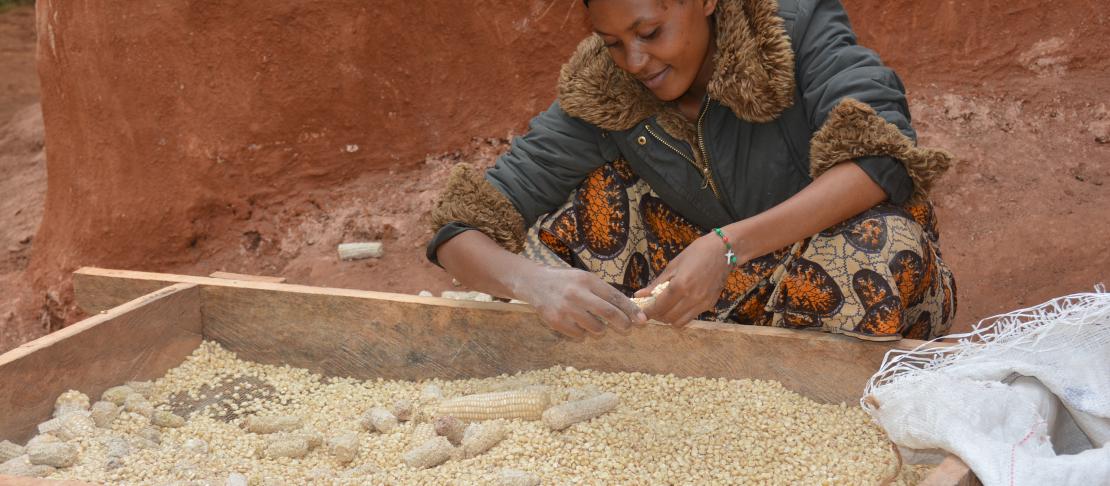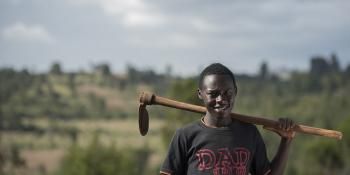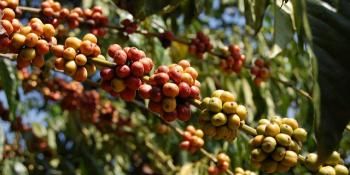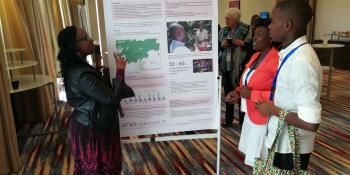Researchers partner with the private sector to improve maize production in Lushoto smart villages

Partnership for training farmers in Lushoto for successful climate change adaptation
If farmers are educated on how best they can grow their favourite crops, they are more likely to improve crop yields more efficiently and sustainably on available land and also increase their income”, states 54-year old Atanasio Abel Singano, a farmer from Kwang’wenda village in Lushoto.
On 22 March 2016, Atanasio hosted a maize field day on his farm, as part of a training event organized by PANNAR Seed Company, Selian Agricultural Research Institute (SARI), and Lushoto District Council’s Department of Agricultural extension, in collaboration with the village based Kwamaga Savings and Credit Cooperative organization (SACCO). Two hundred farmers (119 men and 81 women) from five Climate-Smart Villages (CSVs) — Kwang’wenda, Luandai, Kigurunde, Mshizii and Mbuzii villages — participated in the whole day training. The training focused on improved management practices essential for improving yields of drought-tolerant, well-adapted maize hybrids and open-pollinated varieties developed by the International Maize and Wheat Improvement Centre (CIMMYT). Several management practices were introduced to the farmers and included:
- Seed dressing – Plant stand per unit land area had a positive correlation with grain yield. Seed dressing is useful in controlling soil-inhabiting pests and done pre-planting, in some cases as a slurry, and in others as a dry powder.
- Thinning and cultivation – Over-planting maize seed ensures a near-perfect plant stand. The emerged plants are then thinned to the desired plant density at the 2–4 leaf stage. Cultivation needs to be done as soon as possible after thinning to create furrows for water conservation, provide more topsoil around the maize stands, and to control weeds.
- Weed control – Maize is particularly sensitive to competition during the early growth stage and weeds must be controlled effectively. Good land preparation is the first step in effective weed control, and timely planting should be done as soon as possible after land preparation. As a general rule, the maize crop should be weed-free until flowering. Weed infestation after flowering has little or no adverse effect on maize performance.
- Control of diseases and pests – diseases and insects may be controlled with the application of the appropriate chemicals. However, practices such as crop rotations with fallowing (land out of production for a period of time) were useful in controlling the menace.
- Fertilizer application – Fertilizers promote vigorous growth and high productivity of maize. Nitrogen, Phosphorus, Potassium, and some micro-elements are required by maize and must be supplied by the soil. Therefore, where soil tests indicate inadequate levels in the soil, fertilizers must be applied externally. Fertilizer should be applied immediately after planting or not later than the two/three leaf stage after thinning has been completed. Farmers were also trained how to apply manure, taking into consideration the stage of manure decomposition before application and the distance from the maize plant at which the manure is to be applied.
- Timely harvesting – Maize should be harvested as soon as possible after the plant is sufficiently dry. Timely harvesting reduced disease infection, infestation by field-to-store pests, such as weevils, the lodging of plants, damage by birds, and seed germination on the cob.
Participatory on-farm data collection
Apart from management practices, farmers also learnt about the importance of data collection from SARI scientists. Important traits for data collection include:
- Plant stand – Total number of plants per farm obtained soon after thinning.
- Days to tasseling – Number of days from planting to the date when half of the plants on a farm have emerged tassels.
- Days to anthesis – Number of days from planting to the date when half of the plants on a farm have tassels shedding pollen.
- Days to silking – Number of days from planting to the date when half of the plants on a farm have emerged silk.
- Plant height – Average height of plants from the base of the plant to where tassel branching begins.
- Ear height – Average height from the base of the plant to the node bearing the upper ear.
- Plant aspect – This is a general score for the appearance of the plants on the farm, considering factors such as relative plant and ear heights, uniformity, reaction to diseases and insects, and lodging.
- Husk cover – Taken when ears are fully developed and husk leaves are drying out.
The training was graced by the PANNAR Tanzania Managing Director Mr. Zakayo Owenya, who promised to provide sufficient quantities of seed that were suitable, depending on the seasonal forecast. The Lushoto District Council made a commitment to scale out the improved maize production through closer partnership with the all value chain players, especially the private sector.
This blog was written by John Recha, Philip Kimeli and James Ogweno from CCAFS East Africa and George Sayula from SARI. The story was edited by Catherine Mungai from CCAFS East Africa.



